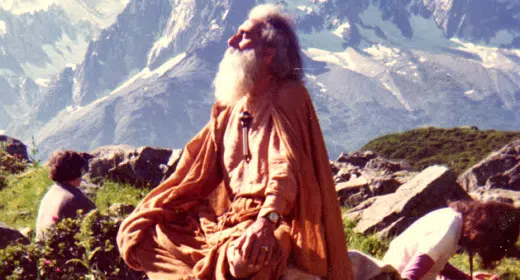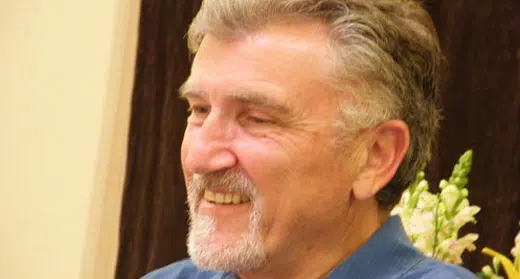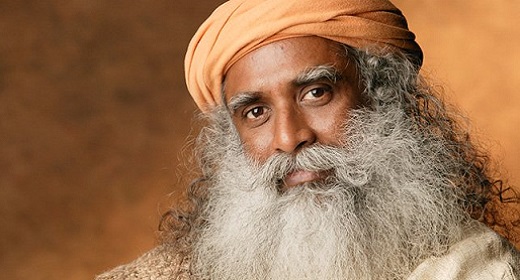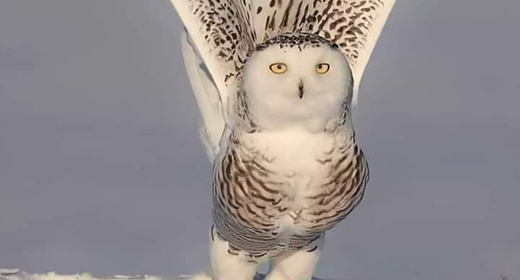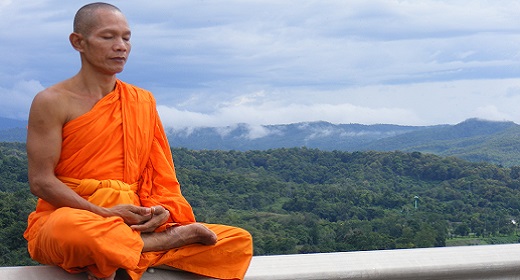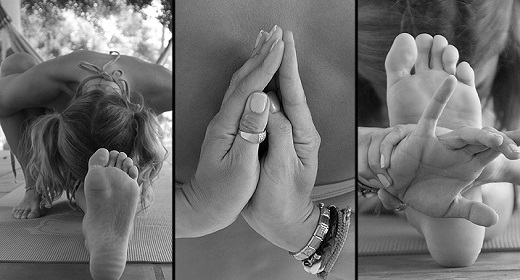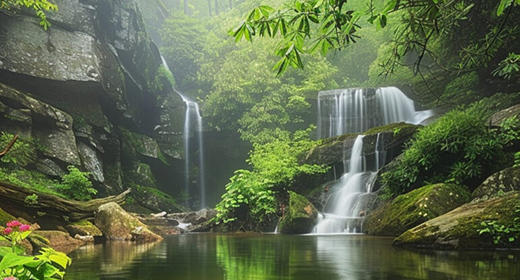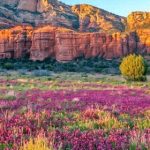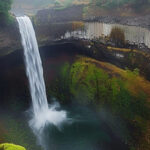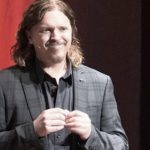Sri Krishna Pattabhi Jois was born on the full moon day of July, 1915, Guru Purnima day.  His ancestral village, Kowshika, near Hassan in Karnataka State, is inhabited by maybe 500 people and has one main street. At one end of the street is a Vishnu temple, just next to Pattabhi Jois’ home. At the far end of the street, just 100 yards away, lies a small Ganapati temple, and just opposite, a Siva temple. Both are several hundreds years old, and are the focus of the village.Pattabhi Jois’s father was an astrologer and a priest, who acted as the pujari for many of the families in the village. From an early age, as most brahmin boys, Pattabhi Jois was taught the Vedas and Hindu rituals.
His ancestral village, Kowshika, near Hassan in Karnataka State, is inhabited by maybe 500 people and has one main street. At one end of the street is a Vishnu temple, just next to Pattabhi Jois’ home. At the far end of the street, just 100 yards away, lies a small Ganapati temple, and just opposite, a Siva temple. Both are several hundreds years old, and are the focus of the village.Pattabhi Jois’s father was an astrologer and a priest, who acted as the pujari for many of the families in the village. From an early age, as most brahmin boys, Pattabhi Jois was taught the Vedas and Hindu rituals.
When Guruji was 12 years old, he attended a yoga demonstration at his middle school in Hassan. The next day he went to meet the great yogi who had given the demonstration, a man by the name of Sri T. Krishnamacharya, who had learned yoga for nearly eight years from his Guru, Rama Mohan Brahmachari in a cave in Tibet. For the next two years, Guruji learned from his Guru every day. When Guruji turned 14, he had his brahmin thread ceremony. Krishnamacharya left Hassan to travel and teach, and Guruji left his village to go to Mysore.
Guruji wished to attend the Sanskrit University of Mysore. With two rupees in his pocket, he left with two friends. They traveled the 100 plus kilometers by bike, over dirt roads. For the first year or two, life was very difficult. With very little money, he begged for his food from some of the brahmin houses. Guruji attended classes and did his studies. Then, around 1930, he went to a yoga demonstration and saw that it was his Guru. He came forward and prostrated, and they recommenced their relationship, and Guruji his yoga studies.The Maharaja of Mysore, Krishna Rajendra Wodeyar, had fallen ill. He learned that there was a great yogi who had come to Mysore. Krishnamacharya was called to him, and duly cured him. The Maharaja became a great patron of his and built him a yogashala (school of yoga) on the grounds of the Palace Art Gallery. Guruji was also beckoned to teach the Maharaja on occasion, and was called upon several times to give yoga demonstrations. The Maharaja, who had taken a liking for Guruji, told him, “I want you to teach yoga at the Sanskrit College. You teach. I will give you a scholarship to go to school, free food in my mess hall and a salary.” Guruji, very happy, asked permission from his Guru. Krishnamacharya approved, and the Yoga Department of the Sanskrit College began on March 1, 1937. He continued as the head until his retirement in 1973.
From 1937 until 1973, Guruji earned his professorship at the University, granting him the title of Vidvan. He married, in a love marriage, Savitramma, who came from a long line of Sanskrit scholars. Her grandfather was the Sanskrit and philosophy teacher to the last Shankaracharya of Kanchi, Sri Chandrasekharendra Saraswati. They had three children, Manju, Ramesh, and Saraswati. Saraswati is the mother of Sharath, born in 1971, who is now Guruji’s co-director of their school in Mysore.In 1964, Andre Van Lysbeth bacame the first Westener to study with Guruji. Soon after that, more Europeans came. Around 1972, the first Americans came, after meeting Manju at Swami Gitananda’s ashram in Pondicherri. It was at that point that ashtanga yoga began spreading in America, starting in California, and then later emerging in Hawaii. In 1975, Guruji and Manju made their first trip to America. Over the next 25 years, the practice spread through the United States, France, Germany, Russia, Japan, Israel, Chile, England, Italy, Spain, Switzerland, Canada, Australia, New Zealand, etc. Guruji has, for 63 years, been teaching uninterruptedly this same method that he learned from Krishnamacharya in 1927.


